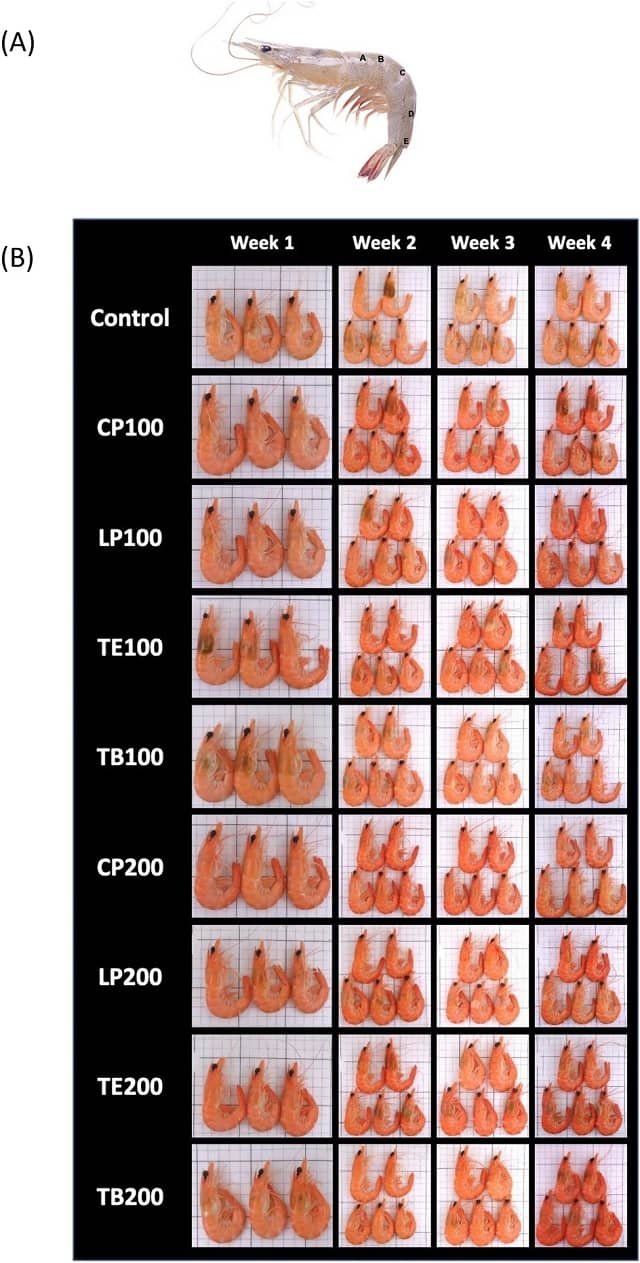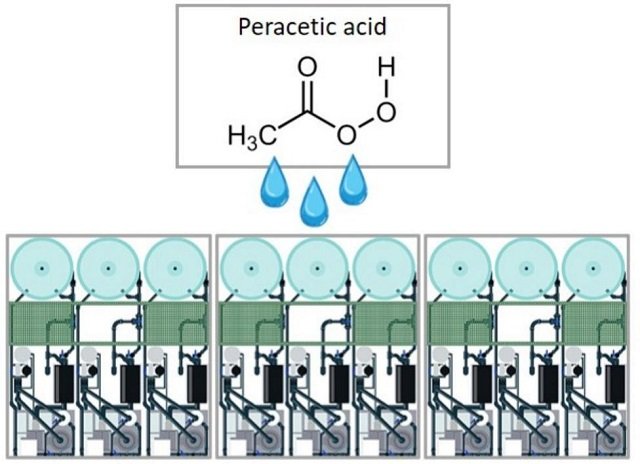
The Shrimp Industry is Constantly Seeking to Optimize Its Processes to Ensure a Quality and Sustainable Product. In This Context, Nutrition Plays a Fundamental Role. While Free Fatty Acids Have Traditionally Been Used as Dietary Supplements in Aquaculture, Monoglycerides Have Recently Captured the Attention of Industry Experts.
Researchers from Kasetsart University (Malaysia) and Berg & Schmidt Asia Pte Ltd (Singapore) published a study in the journal PLoS ONE aimed at evaluating the effects of short- and medium-chain fatty acid monoglycerides, combined with cinnamaldehyde (SMMG), on the growth, survival, immune response, and hypoxic stress tolerance of Pacific white shrimp (Litopenaeus vannamei).
Understanding Fatty Acids and Their Importance in Aquaculture
Fatty acids, essential components of lipids, play a crucial role in the health and well-being of aquatic organisms. They are primarily classified into short-chain fatty acids (SCFA) and medium-chain fatty acids (MCFA). The former, produced by bacterial fermentation in the gut, and the latter, naturally found in foods such as coconut oil and milk, have demonstrated benefits in improving growth, immune response, and disease resistance.
The Advantage of Monoglycerides
Although free fatty acids exhibit antimicrobial properties, their effectiveness is limited by pH and their rapid absorption in the digestive tract. Monoglycerides, on the other hand, overcome these limitations. Lacking ionizable groups, they maintain their antimicrobial activity over a wide pH range and reach the gut intact, where they exert their effects. Additionally, they are odorless, making them a more attractive option for animal feed.
Cinnamaldehyde: A Powerful Ally
Cinnamaldehyde, a natural compound found in cinnamon, has demonstrated antimicrobial, anti-inflammatory, and antioxidant properties. Its inclusion in fish and shrimp diets has shown benefits in health and performance.
SMMG: The Perfect Synergy
The combination of short- and medium-chain fatty acid monoglycerides with cinnamaldehyde (SMMG) represents an innovative approach in aquaculture nutrition. This synergistic blend leverages the individual strengths of each component to maximize benefits.
Promising Results with SMMG
The researchers divided shrimp post-larvae into four groups and fed them diets supplemented with different levels of SMMG for 30 days. The results were remarkable:
- Increased Growth and Survival: Shrimp fed diets containing 0.3% to 0.5% SMMG showed significantly higher final body weight and survival rates compared to the control group.
- Greater Stress Resistance: When subjected to hypoxic stress conditions (low oxygen levels), shrimp fed with 0.4% and 0.5% SMMG showed a significantly higher survival rate than the control group.
- Enhanced Immune System: The study revealed a significant increase in the immune parameters of shrimp fed with SMMG, suggesting an improved ability to fight diseases.
- Reduction of Intestinal Bacteria: Levels of Vibrio spp., a common bacterium in shrimp intestines, significantly decreased in the SMMG-treated groups.
- Improved Liver Health: Histopathological analysis of the hepatopancreas showed better structure in shrimp fed with SMMG compared to the control group.
SMMG: An Ally for Shrimp Aquaculture
These findings position SMMG as a promising additive for shrimp feed. Its ability to enhance growth, survival, immune health, and stress tolerance makes it a valuable tool for increasing the efficiency and sustainability of aquaculture.
Stay Always Informed
Join our communities to instantly receive the most important news, reports, and analysis from the aquaculture industry.
Preliminary results indicate that SMMG supplementation can:
- Improve Growth and Survival: Stimulate weight gain and reduce mortality.
- Strengthen the Immune System: Increase shrimp’s ability to fight diseases.
- Reduce Bacterial Load: Decrease the presence of Vibrio spp., a common pathogen in aquaculture.
- Increase Stress Tolerance: Enhance shrimp’s ability to cope with adverse conditions such as hypoxia.
Conclusion
The findings of this research open new possibilities for developing more efficient and sustainable diets for shrimp farming. SMMG could become a fundamental tool for improving shrimp health and productivity, contributing to a more profitable and environmentally friendly aquaculture sector.
It is important to note that further studies are needed to optimize the SMMG dose and evaluate its long-term impact on shrimp health and reproduction. However, the results obtained so far are very encouraging and open new perspectives for the development of innovative nutritional strategies in aquaculture.
Contact
Niti Chuchird
Faculty of Fisheries, Department of Fishery Biology, Kasetsart University
Bangkok, Thailand
Email: ffisntc@ku.ac.th
Reference (open access)
Rairat T, Kitsanayanyong L, Keetanon A, Phansawat P, Wimanhaemin P, Chongprachavat N, et al. (2024) Effects of monoglycerides of short and medium chain fatty acids and cinnamaldehyde blend on the growth, survival, immune responses, and tolerance to hypoxic stress of Pacific white shrimp (Litopenaeus vannamei). PLoS ONE 19(8): e0308559. https://doi.org/10.1371/journal.pone.0308559
Editor at the digital magazine AquaHoy. He holds a degree in Aquaculture Biology from the National University of Santa (UNS) and a Master’s degree in Science and Innovation Management from the Polytechnic University of Valencia, with postgraduate diplomas in Business Innovation and Innovation Management. He possesses extensive experience in the aquaculture and fisheries sector, having led the Fisheries Innovation Unit of the National Program for Innovation in Fisheries and Aquaculture (PNIPA). He has served as a senior consultant in technology watch, an innovation project formulator and advisor, and a lecturer at UNS. He is a member of the Peruvian College of Biologists and was recognized by the World Aquaculture Society (WAS) in 2016 for his contribution to aquaculture.




